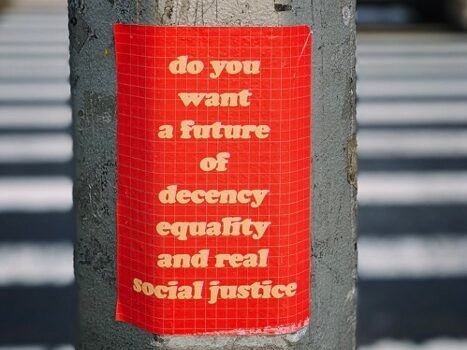I have been in hundreds of conversations about how to increase racial diversity in organizations and companies. Most of them are either idealistic pipe dreams or efforts to find the “magic right answer” and avoid the hard, uncomfortable work of change. Black History Month seems like a great time to begin exploring different approaches to starting more fruitful discussions about racial equity.
How the vaccine for coronavirus is being distributed is a great case study in inequity! My white friends and I are scurrying around trying to get appointments for the “shot.” We use multiple devices, teams of friends and family and random drop-ins within 100 miles or farther to get this protection. Meanwhile, people of color and older people with no access to technology are left out – those alleged to be the highest priority because of risk.
Dr. Jerry Abraham leads the vaccination center at Kendrick Health Center in South Los Angeles. He and his team are committed to getting the shots to the people of color and elderly in their community. There are many barriers including young ineligible white people who show up with lawn chairs and laptops to compete for any left-over vaccine. We don’t have to look far to see inequity if we want to see it.
One way to advance conversations about equity is hearing from people who are actively engaged in talking with colleagues about racial equity every day. Today I offer reflections from a friend and colleague, Rachael Gibson. Rachael is Jamaican and immigrated to the U.S. at age 18. She has worked for racial justice and equity throughout her work life. I met her in our work together facilitating leadership transitions and leader succession planning with nonprofits across America.
Rachael brings a unique ability to accept each person where they are, respect their right to that position, and to use story and facilitated conversations and learning to change behavior. Today Rachael shares her experience in getting conversations about racial equity started. Future posts will explore her experience in applying these practices to leader development and transitions.
“When working with clients to advance their racial equity lens, I like to start with defining key terms. I begin by defining terms like equality, equity, systemic racism, etc. I start the conversation at the systemic level, then I move to the personal level. I want to start in a way that engages and does not shut people down. I appreciate that no matter what their motive for being there, each has chosen to participate. So I try to see the gift for each of us.
Equity is about addressing the unique needs of different groups and tailoring supports, practices and policies in response to these unique needs. It’s different from equality, which assumes that everyone is starting out with the same resources and access to opportunities.
I often use housing as an example of historic and ongoing inequality. There have been racial inequities in housing from the beginning of time. Think about the covenants that were used to prevent Black people from living in certain neighborhoods across the country. The Color of Law is a recent book that details discrimination led by elected officials and the real estate industry. They were joined by the banking and insurance industries in developing what is now commonly referred to as ‘redlining,’ the practice of making neighborhoods where people of color live ineligible for financing.
Deepening people’s understanding of equity leads directly to an exploration of what is meant by structural racism. The Aspen Institute defines structural racism this way: “A system in which public policies, institutional practices, cultural representations, and other norms work in various, often reinforcing ways to perpetuate racial group inequity.”
Most people have read or heard about disparities in health and life expectancy for Blacks and people of color. Exploring the root causes of these disparities helps deepen appreciation of the power of structural racism. The trauma inflicted on people who came to this country as enslaved people, the food offered to enslaved people and the continuation of food deserts and aggressions that fuel trauma and stress are often ignored in discussing life expectancy differences between whites and people of color.
Discussions of equity and structural racism are not easy. These discussions allow me to be direct and not sugarcoat the reality while being grateful and open to all who choose to participate.
Behaviors can change when participants have a larger context to work for change. Equity is that larger context.”
How have you experienced or witnessed the difference between equity and equality? What aspects of the idea of structural racism do you accept or reject? As our communities and nation continue to struggle with justice for all, now is a great time to reflect on these ideas and talk with your friends and neighbors about them.
As Black History Month ends, consider sharing what you learned and from where this month about racial equity and the path to a more just America. Among other experiences, I learned from a facilitated discussion of the movie Code Switching about the Boston busing experiment and its impact on Black people and the PBS special The Black Church. Visit https://thadams.com/category/racial-equity-justice/ for other posts on racial equity and justice.




The more I read and discern, the more I realize there’s a world of experience I don’t know…
Thx for Rachel’s discussion and the recognition that these dialogues are not easy.
I continue to explore ; it’s part of life’s journey to take these matters seriously, and approach with humility.
I want to be teachable and learn.
Thanks Sally, for sure, racial equity is life-time learning for all of us. Thanks for being on the journey.
Tom